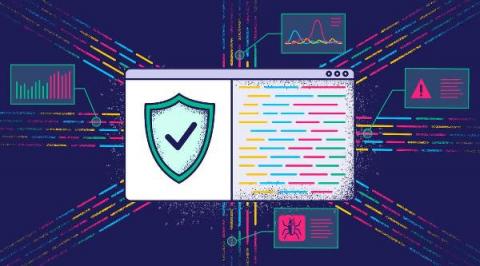Security | Threat Detection | Cyberattacks | DevSecOps | Compliance
Latest News
How to Use Egnyte to Protect Against Insider Threats
Vigilant companies continuously review risks and their cybersecurity postures. They deploy active defense-in-depth measures and utilize the latest malware detection and mitigation techniques. However, there is one type of vulnerability that tends to fall through the cracks—insider threats. That’s because IT organizations often believe it’s management’s problem to address, while managers believe IT groups have insider threats under control.
Vulnerability Management: Process, Life Cycle, and Best Practices
Vulnerability management is a full-time occupation. This cybersecurity function is iterative and involves constant monitoring, documentation, and review. From updating your software to recording new patches, vulnerability management is a constant process that benefits from automated tools like Nightfall . Here’s how vulnerability management works, the ins and outs of the vulnerability management life cycle, and best practices to implement at your organization.
What are bots costing gaming and betting companies?
As the pandemic pushed more businesses to an online-first model, cybercriminals seized opportunities to profit from fraudulent activity. But the financial impact of these attacks on businesses has been hard to quantify. Netacea recently surveyed 440 businesses from across the USA and UK to understand how much financial impact bot attacks are having across different industries.
Wanted: Reward of up to $10 million for critical infrastructure hackers
The U.S. government aims to tackle cybercrime, in particular attacks targeting critical infrastructure. For this purpose, the U.S. State Department has announced a reward of up to $10 million to anyone who offers valid information about any potential cyberattacks on critical infrastructure supported by foreign states.
The Next Big Challenge: Cloud Complexity
Cybersecurity remains an ever-growing concern in our digitized, post-pandemic world. While rapid digitization opens doors to ample benefits and business opportunities, companies also have to deal with an uptick in cybercrimes, as criminals and other threat actors raise their game, making cyber attacks more frequent and complex than ever before. Consequently, businesses have suffered serious losses resulting from ransomware attacks, data breaches, and theft of trade secrets.
It's Time to Get Hip to the SBOM
The DevOps, IT security and IT governance communities will remember 2021 as the year when the Software Bill of Materials , or SBOM, graduated from a “nice to have” to a “must have.” Around for years, the SBOM has now become a critical DevSecOps piece, which everyone must thoroughly understand and incorporate into their SDLC (Software Development Lifecycle).
Observability and Cyber Resiliency - What Do You Need To Know?
Observability is one of the biggest trends in technology today. The ability to know everything, understand your system, and analyze the performance of disparate components in tandem is something that has been embraced by enterprises and start-ups alike. What additional considerations need to be made when factoring in cyber resiliency? A weekly review of the headlines reveals a slew of news covering data breaches, insider threats, or ransomware.
What is Shadow IT? And How to Manage It
Everything connected to your network poses a security risk. Every application on every device poses a threat to that device which then increases your security risk profile. Ultimately, organizations need visibility into all users, applications, and devices on their networks. Whether arising from employees using personal devices or downloading applications to corporate devices, shadow IT is becoming a bigger problem for organizations.
An easy recipe for identity fraud - Post a dream job LinkedIn advert on behalf of almost any employer
This post is about LinkedIn – a go-to professional networking and jobs platform – a feature that allows outside individuals (not belonging to the target organisation) to post jobs on an organisation’s behalf. Whether you call it posting scam jobs on LinkedIn, phishing the LinkedIn users or any wider campaigns based on the drivers – it is a recipe for Identity fraud.











